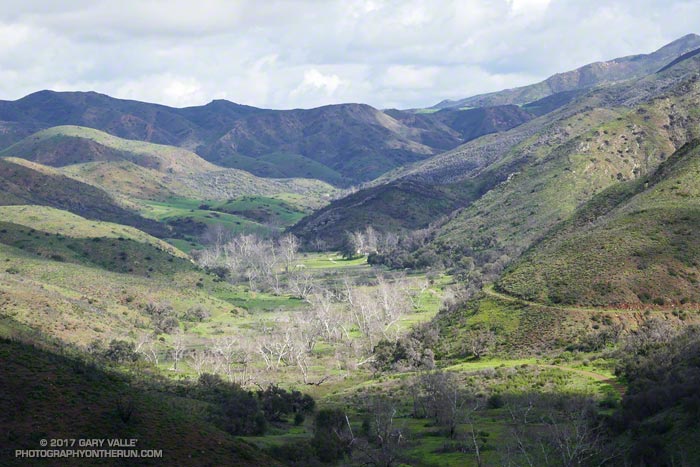
Big Sycamore Canyon from the Wood Canyon Vista Trail segment of the Backbone Trail in Pt. Mugu State Park.
From Saturday’s run to Serrano Canyon and La Jolla Valley.

Big Sycamore Canyon from the Wood Canyon Vista Trail segment of the Backbone Trail in Pt. Mugu State Park.
From Saturday’s run to Serrano Canyon and La Jolla Valley.
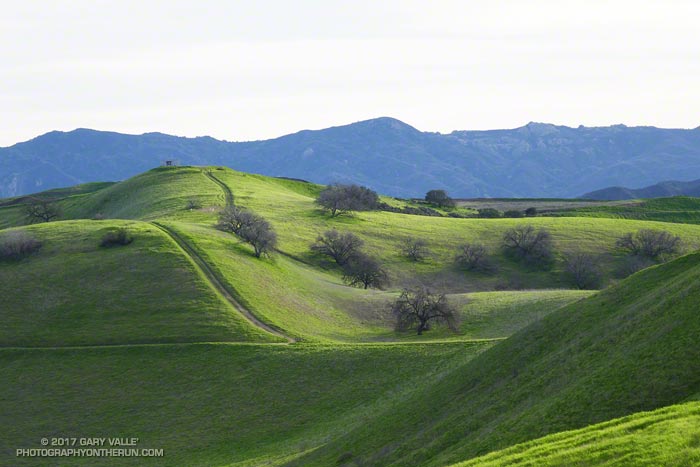
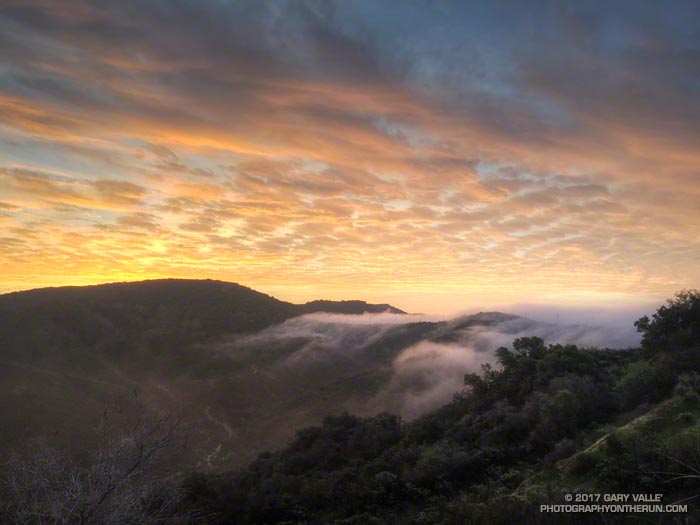
At the start of my run from the Top of Reseda (Marvin Braude Mulholland Gateway Park) the visibility above the fog-filled San Fernando Valley was at least a hazy 25 miles.
Ahead of another rainstorm, offshore pressure gradients had weakened and the onshore flow was rapidly increasing, pushing marine layer clouds into the coastal canyons of the Santa Monica Mountains and spilling over the low points of the crest.
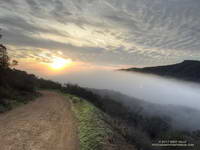
My first stop was going to be Temescal Peak. This little peak is about 3.5 miles from the trailhead, near the junction of Temescal Ridge fire road and the Backbone Trail. It’s a nice way to start a run, and on a clear day it can have surprisingly extensive views.
Fog flowed over Fire Road #30 between Rustic Canyon and Garapito Canyon, but once through this ethereal river, it was clear all the way up to the Hub. I wondered if I was going to be able to see Mt. San Jacinto from the top of Temescal.
The answer to that question turned out to be no. In fact I could barely see my nose from Temescal Peak. In the 12 minutes it had taken me to get to the peak from the Hub the entire area, including the summit of Temescal Peak (about 2100′), had become enveloped in fog.

From Saturday afternoon’s rain-free run to check out upper Las Virgenes Creek. The nearby Cheeseboro Remote Automated Weather Station (RAWS) had recorded about 2.0 inches of rain the previous three days and would record another 2.4 inches on the following two. The weather station is on top of the prominent hill in the distance. January was the wettest at Downtown Los Angeles (USC) since January 2005.
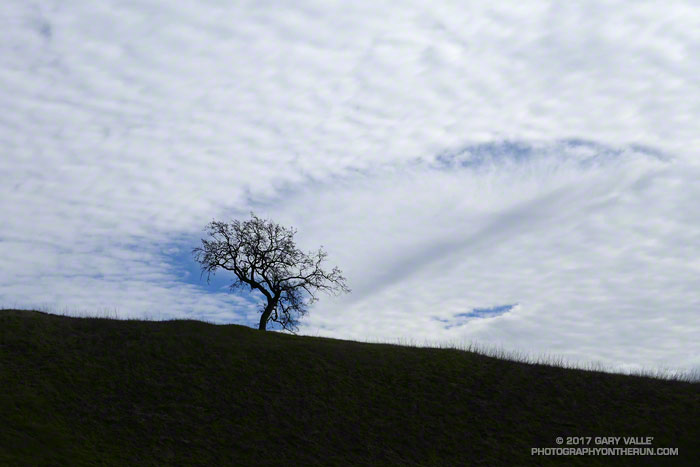
The oval disturbance in the layer of altocumulus clouds in this photograph is a relatively rare phenomenon called a fallstreak hole or hole punch cloud.
These altocumulus clouds are formed from super-cooled water droplets many times smaller than a raindrop. The droplets are in a liquid state even though the temperature is well below freezing. When disturbed by an aircraft passing through the layer the droplets freeze and precipitate out of the cloud as virga. This and other processes create the hole.
The photo was taken on Saturday, January 21, 2017 at 2:23 p.m. near the Las Virgenes trailhead of Upper Las Virgenes Canyon Open Space Preserve. The hole was well south of the area.